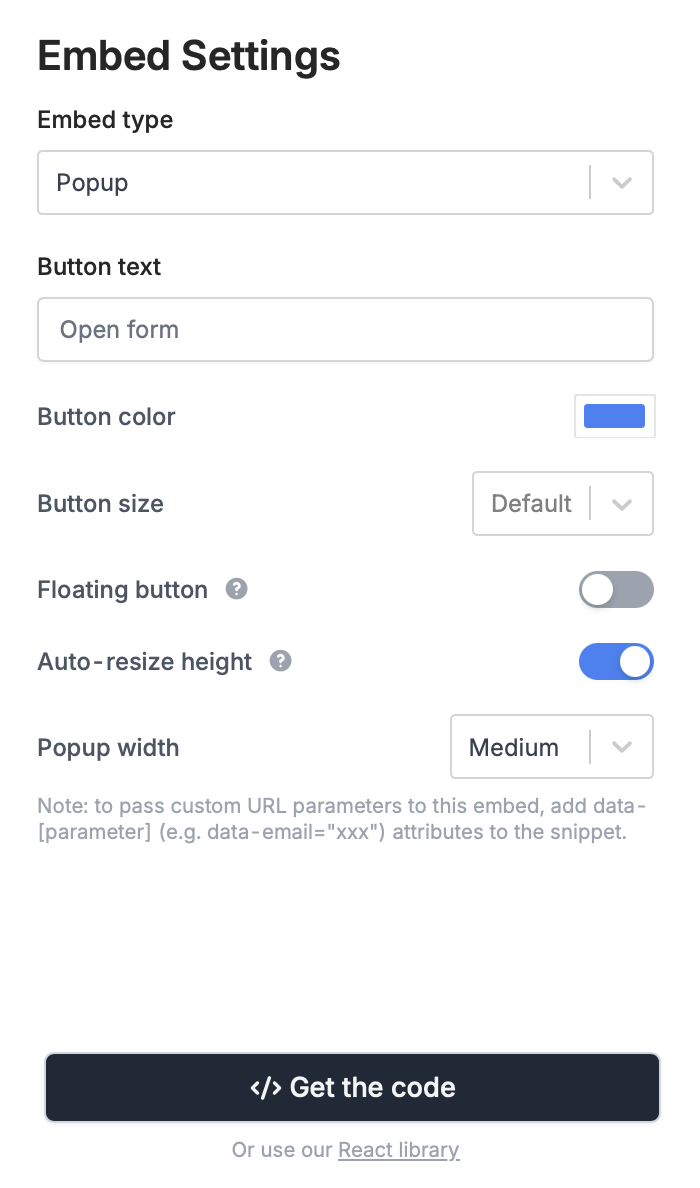Overview
Passing data to your embedded Fillout form can be used to:- Personalize text on your form via answer piping
- Track UTM campaigns
- Update user information based on an ID
- Much more!
Pass dynamic URL parameters
1
Register URL parameters (if you haven’t yet)
Add your parameter in the 
Settings page of your form. More information here.
2
Paste the code
Click 

Share on top and select one of the Embed options followed by Get the code in the popup. Then paste into your website builder or HTML.

3
Add data attributes
In the Embed code, add data attributes for each URL parameter. For example, if you’re embedding this form on your site which is a Facebook-related campaign, and you have a URL parameter of
ref, you can use data-ref="Facebook". Your embedding code will look something like this:Embeds will automatically inherit URL parameters from the parent page that they’re on, so if your main site already has these, you simply need to register the parameter in your form to use it.
4
Publish
Once everything is set, click
Publish in the upper right corner.
